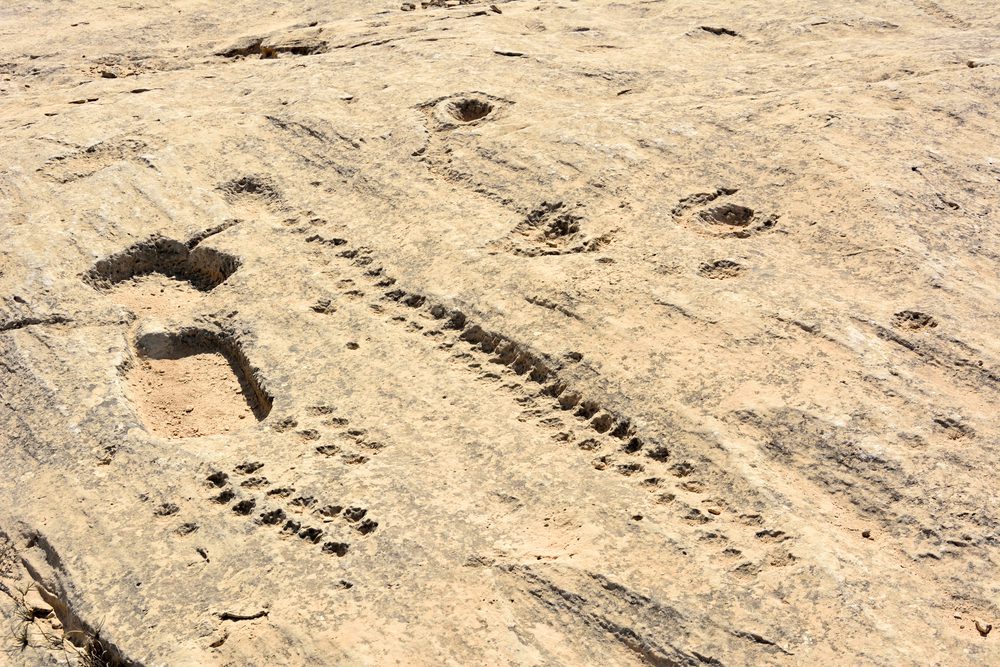It’s hard to find a human culture that doesn’t enjoy scrawling and carving into the environment around them – and the deserts of the Arabian Peninsula are no different. Found along Qatar’s northeastern coast, Al Jassasiya is a dozen different rock-carving sites that feature hundreds upon hundreds of carvings.
Al Jassasiya was first formally discovered by a Danish archaeologist in 1957, but the site was systematically studied in the 1970s when researchers counted a total of 874 carvings.
One of the recurring images that appears among the Al Jassasiya petroglyphs is strange ovals with lines coming out, which look a bit like crawling bugs. However, it’s thought they represent a boat with oars, as seen from a bird’s eye view. Researchers have suggested the boats depict pearling crafts as pearls were widely exported from this part of the world in ancient times.

It’s not known what some of the symbols and shapes represent or were used for. Image credit: Alizada Studios/Shutterstock.com
Other common themes are geometric shapes, enigmatic symbols, and animals, including ostriches and fish. There are also a load of “cup and ring marks,” which are patterns found in prehistoric art from almost every part of the world.
The carvings are examples of early petroglyphs that date back to the 15th century CE. They feel a million miles away from the glitzy capital of Doha, which is found just an hour’s drive south of the area.
The site is sometimes called Jebel Jassassiyeh, which loosely translates from Arabic to mean “to search, hill.” The name likely originated from a time when this slightly elevated area was used to look out over the sea to view incoming ships.
Prehistoric art is often associated with the cave paintings of Europe or the giant Nazca Lines of South America, but the Arabian Peninsula is decorated with a wealth of different styles – especially petroglyphs, which describe images carved into the rock.
Some of the most impressive were discovered near the Sakaka in the al-Jawf Province of Saudi Arabia that feature life-size carvings of camels. Scientists believe some of these carvings here were created 8,000 years ago, which is exceptionally old for this style of artwork.
Researchers have even used carvings in the Saudi desert to show that this part of the world was home to some unexpected wildlife species.
The meaning behind Al Jassasiya is a bit more cryptic than these other sites, but it does show that this part of the Arabian Peninsula was once home to an array of bustling and diverse cultures.
Source Link: Al Jassasiya: The Enigmatic Rock Carvings That Crawl Across Qatar's Desert